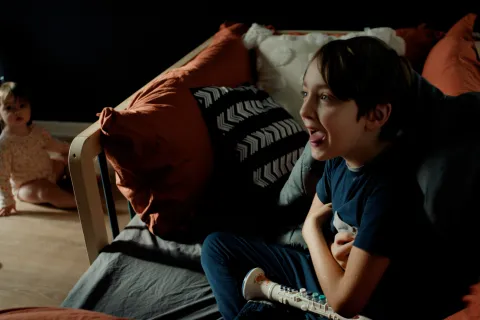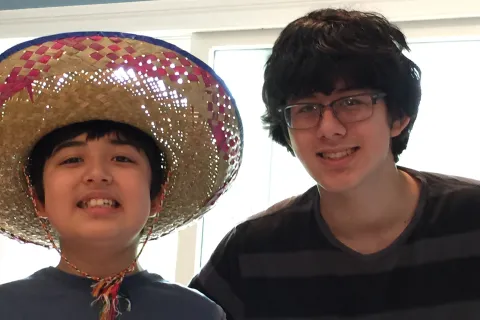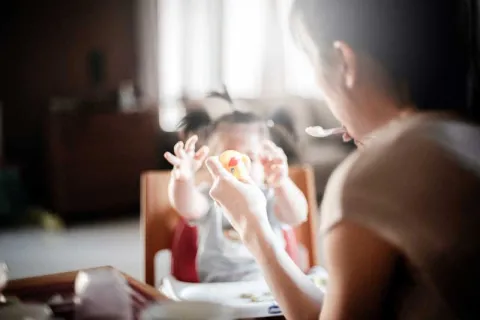The pica and autism connection
Help and perspective
By Lynn Cole, DNP, DNPGuest post by pediatric nurse practitioner Lynn Cole, associate director of clinical services at the University of Rochester’s Division of Neurodevelopmental and Behavioral Pediatrics. The University of Rochester is one of 17 Autism Speaks Autism Treatment Network (AS-ATN) centers. Lynn has co-authored several AS-ATN/AIR-P* tool kits, including an upcoming family guide on pica.
Our teenager continues to eat the strangest things. Is there a connection between autism and pica or other eating disorders?
As a nurse practitioner in a developmental pediatrics program, I see lots of children and teens with pica.
What is pica?
For the uninitiated, pica (pronounced PY-kah) is an appetite for non-food items. This tendency is relatively common in children and adults with autism or other developmental disabilities. They may try to eat all sorts of things. The items I most commonly hear about are paper, soap, pebbles, thread and bits of clothing.
Like you, many parents of children with autism are uncertain what to do. Some feel so embarrassed by the behavior that they don’t even ask for help. So I greatly appreciate both your awareness of your daughter’s pica and your desire for advice.
Issues that to contribute to pica
When parents come to me, they usually want to know why their child is eating inedible objects and strange things. We don’t always know for sure. But three fairly common issues tend to contribute to pica in those with autism:
- The most common is sensory feedback. The individual enjoys the feeling of eating certain non-food items. This kind of sensory stimulation may be similar to other autism-related behaviors such as spinning or looking at lights.
- With some children, the problem appears to be difficulty telling food from non-food. These children think they’re eating food when they’re not.
- Finally, for some children – with or without autism – pica is triggered by genuine cravings for nutrients such as iron or zinc. In these cases, the pica may reflect a nutritional deficiency.
Tips for managing pica
Fortunately, there are several practical steps you can take to protect your child’s health and safety. Read the tips below and download the Autism Speaks Pica Tool Kit for Families that I helped develop.
Alert your healthcare providers
Since low iron and zinc can contribute to pica, your daughter may need a blood test for nutritional deficiencies. With guidance from the lab results, you may need to increase her intake of certain foods or supplements.
Your daughter’s care providers should also monitor for pica-related health problems. A common example is lead poisoning from eating non-food items containing lead. This can likewise be detected with blood tests.
Pica can also produce dental problems, interfere with nutrient absorption and result in gastrointestinal blockages and infections. For these reasons, you and your child’s healthcare team should keep her pica in mind if she becomes ill or develops related symptoms.
Tell teachers and other caregivers that your child has pica
Let them know what kinds of nonfood items she tends to eat and in what situations. This will help them keep her safe. For instance, her teachers may need to store certain things out of her reach or provide extra adult supervision in certain situations.
Do your best to “pica-proof” your home
Consider your home environment and other places where your child spends time. Put items she commonly eats out of sight or locked away. Vacuum and sweep frequently. (I know this is easier said than done, so be patient with yourself.)
Also remember that this is an issue that can affect the entire family. I recommend offering support and sympathy to siblings. For instance, I recently had a patient’s sister tell me, in a surprisingly matter-of-fact manner, that her brother had bitten the hands and feet off all of her Barbies!
Enrich your child’s environment in other ways
This is particularly important if your child’s pica is related to sensory stimulation but it can help anyone with pica. Provide access to a variety of activities that your child enjoys and that don’t include her pica attractions. In particular, I recommend activities that keep her hands busy. That alone will reduce her tendency to put things in her mouth.
Teach your child to differentiate food from non-food
Have your child practice identifying things that are safe and edible versus dangerous and not for eating.
Consider working with a behavior specialist
A behavior specialist can help you and your child find effective ways to reduce pica. These methods can include skill building, redirection and alternative behaviors.
Pica treatments
I recommend finding a specialist who has experience and skills with managing pica in individuals with developmental disabilities. Typically this would be a clinical psychologist and/or a board-certified behavior analyst. Your child’s care team and school may be able to help connect you with local professionals or you can search for providers using the Autism Speaks Resource Guide.
Autism Speaks Autism Response Team is also available to assist:
- English: (888) 288-4762 or help@autismspeaks.org
Español: (888) 772-9050 or ayuda@autismspeaks.org
*AS-ATN/AIR-P tool kits are the product of on-going activities of the Autism Speaks Autism Treatment Network, in its role as the Autism Intervention Research Network on Physical Health (AIR-P). The AIR-P is supported by cooperative agreement through the U.S. Department of Health and Human Services, Health Resources and Services Administration, Maternal and Child Health Research Program to the Massachusetts General Hospital. Its contents are solely the responsibility of the authors and do not necessarily represent the official views of the MCHB, HRSA, HHS, or Autism Speaks.









